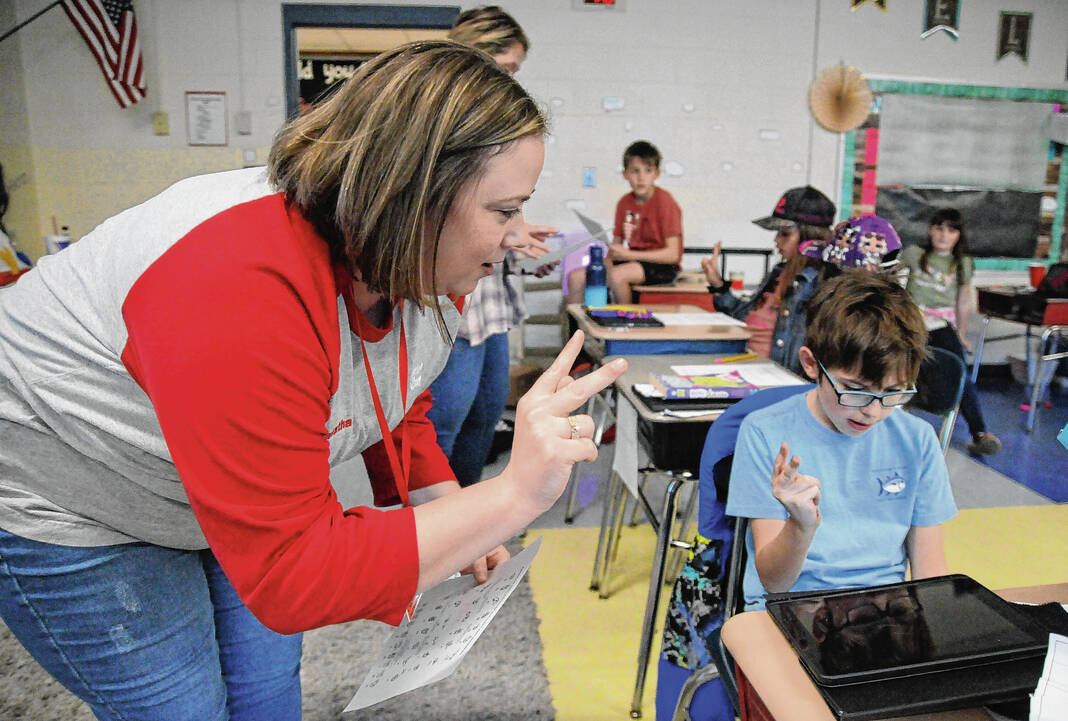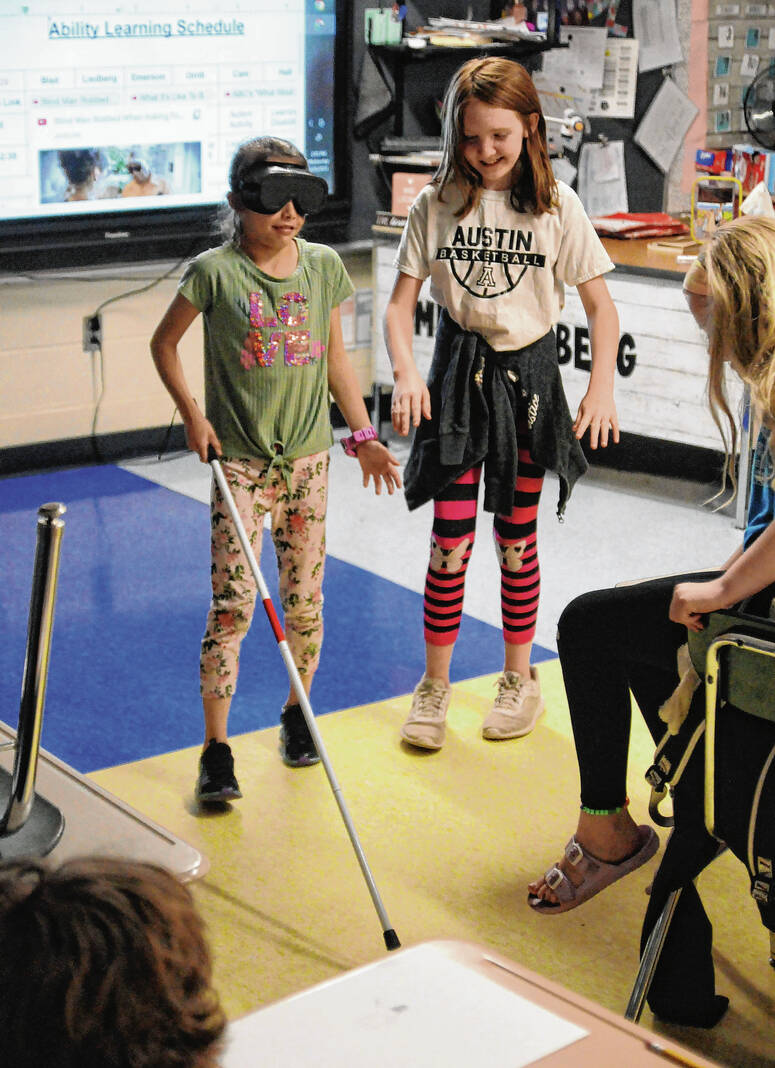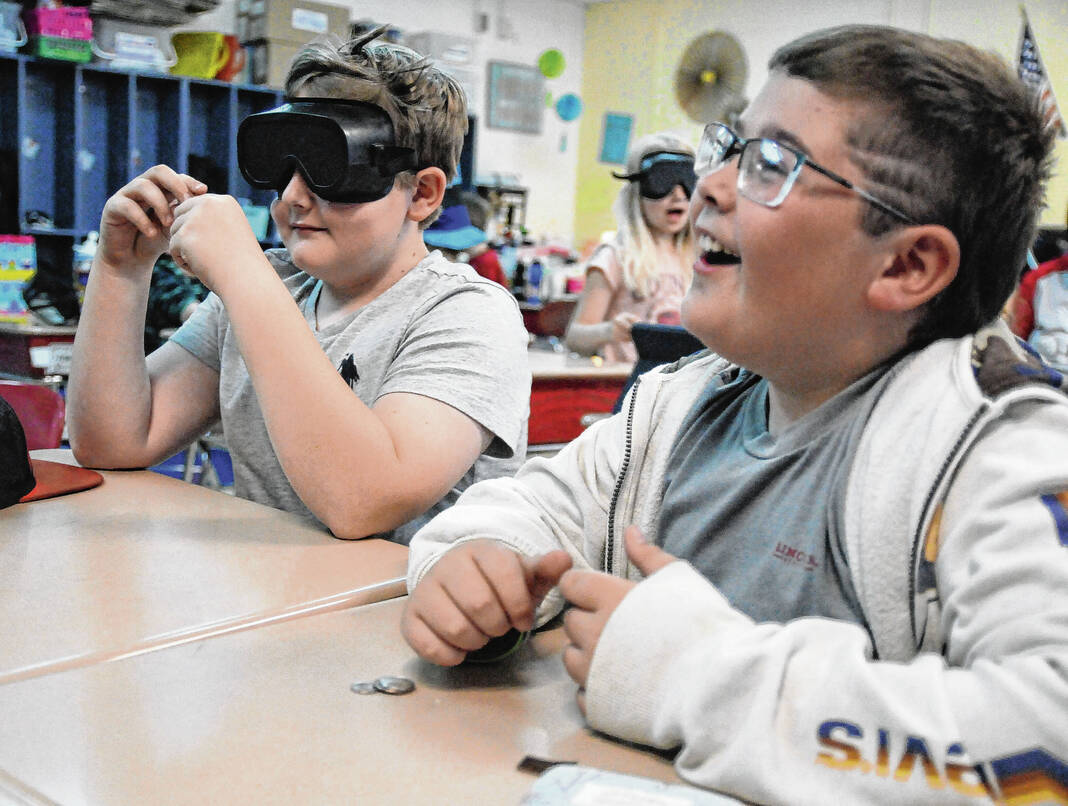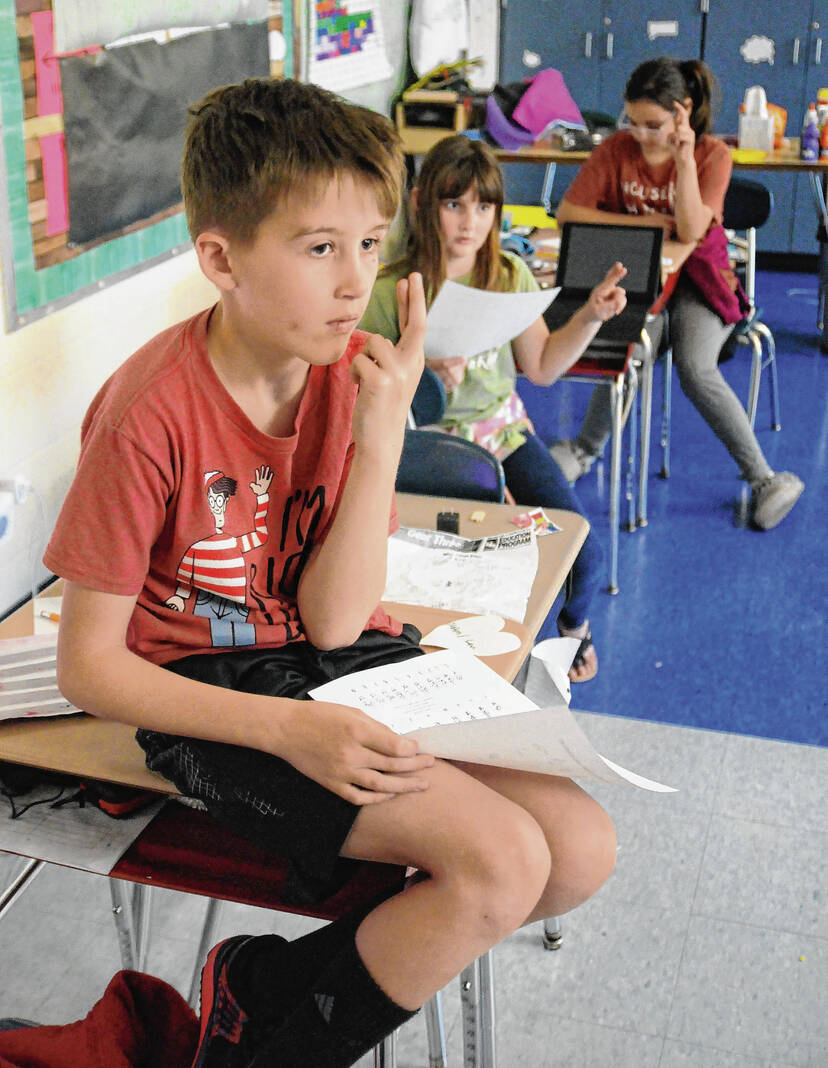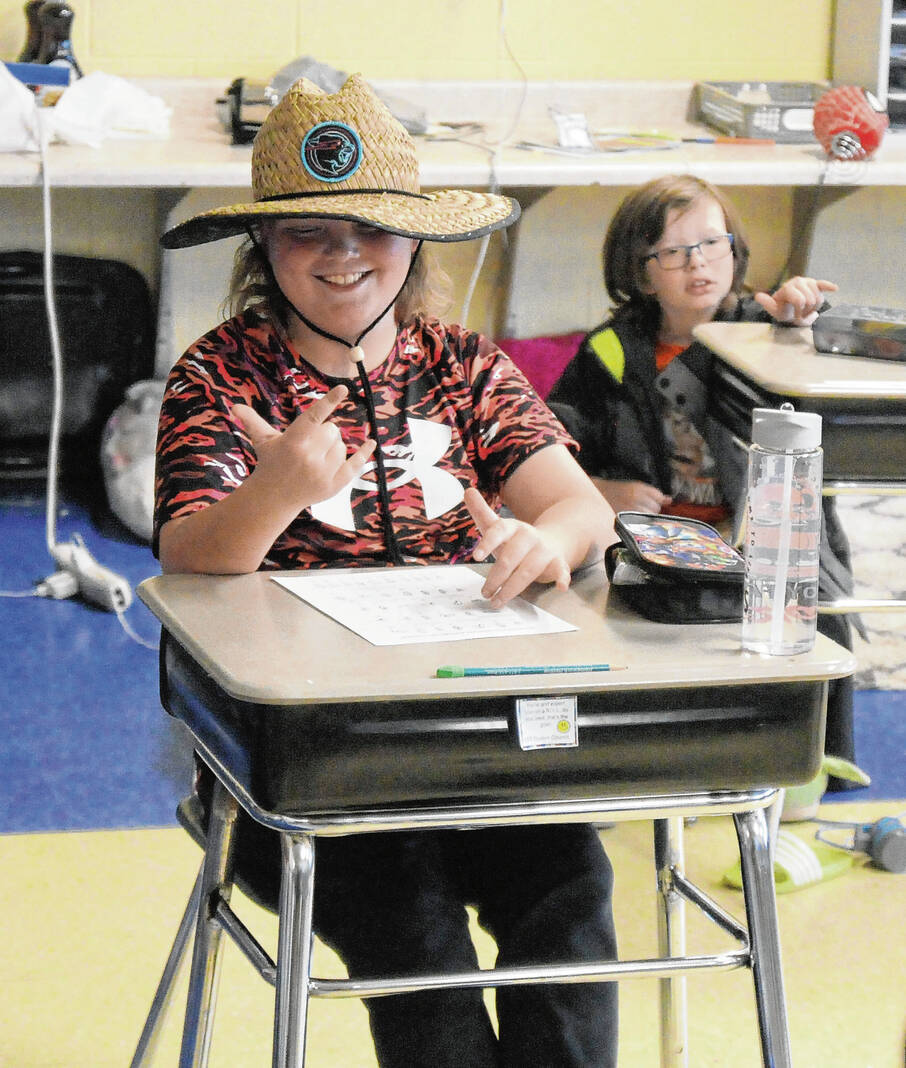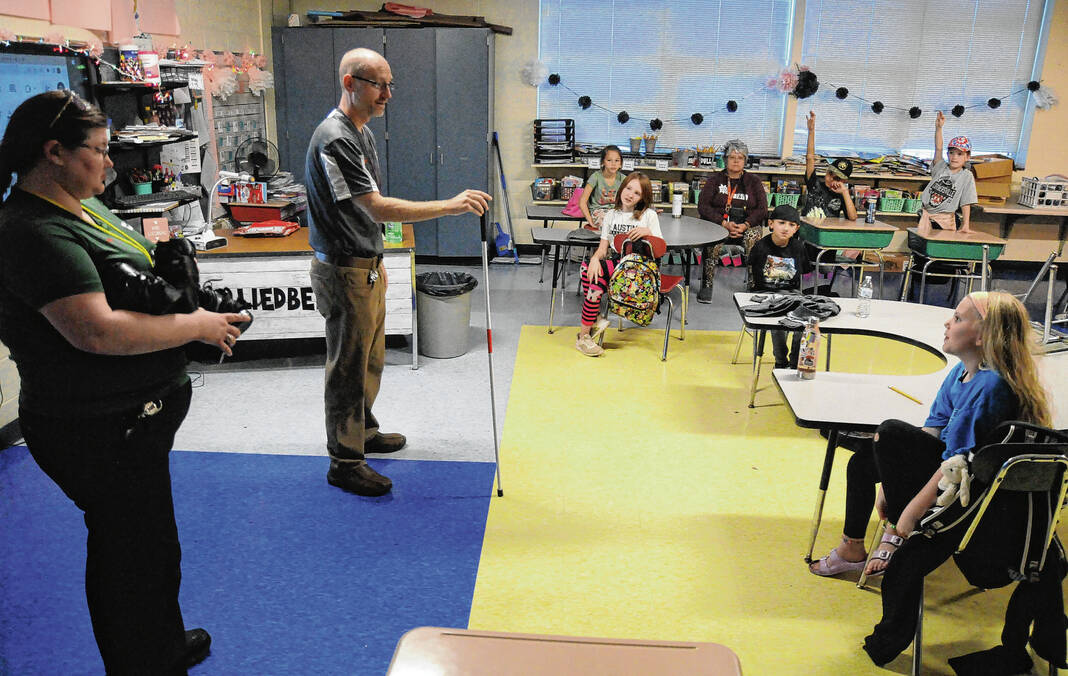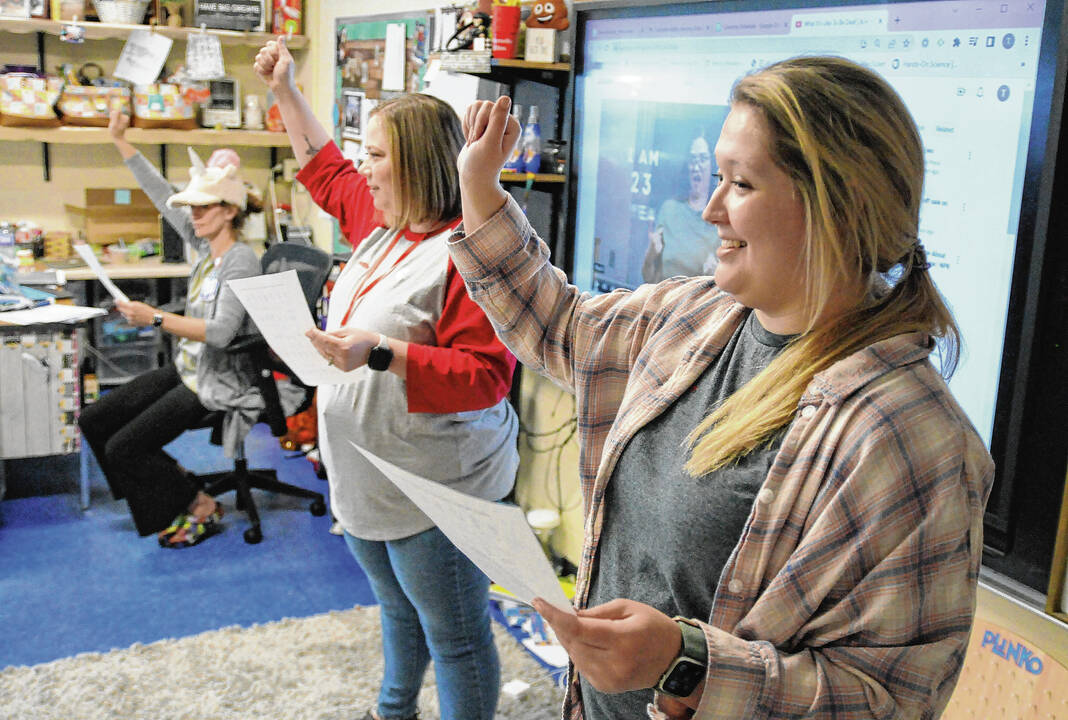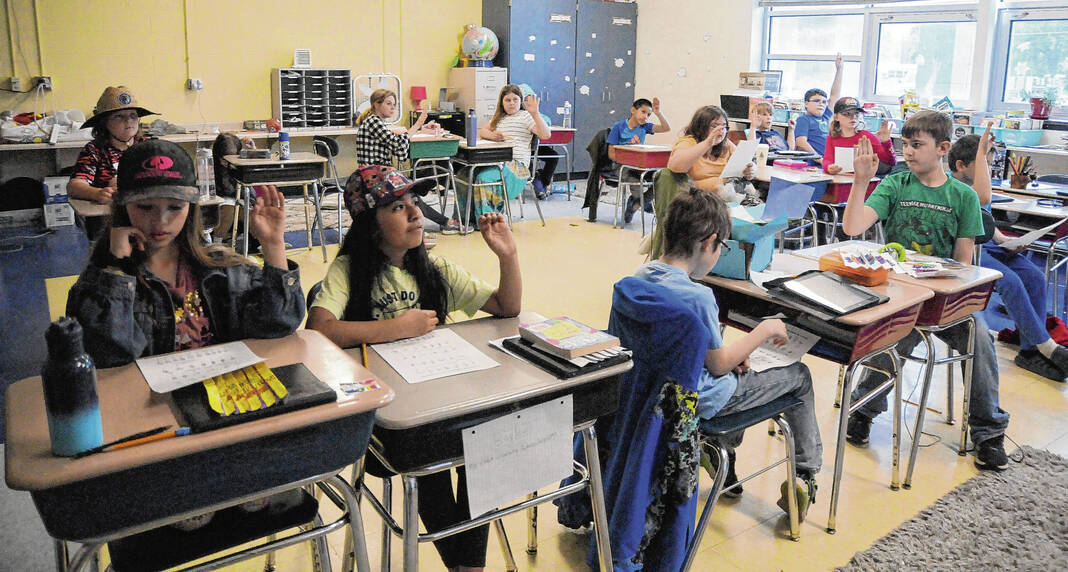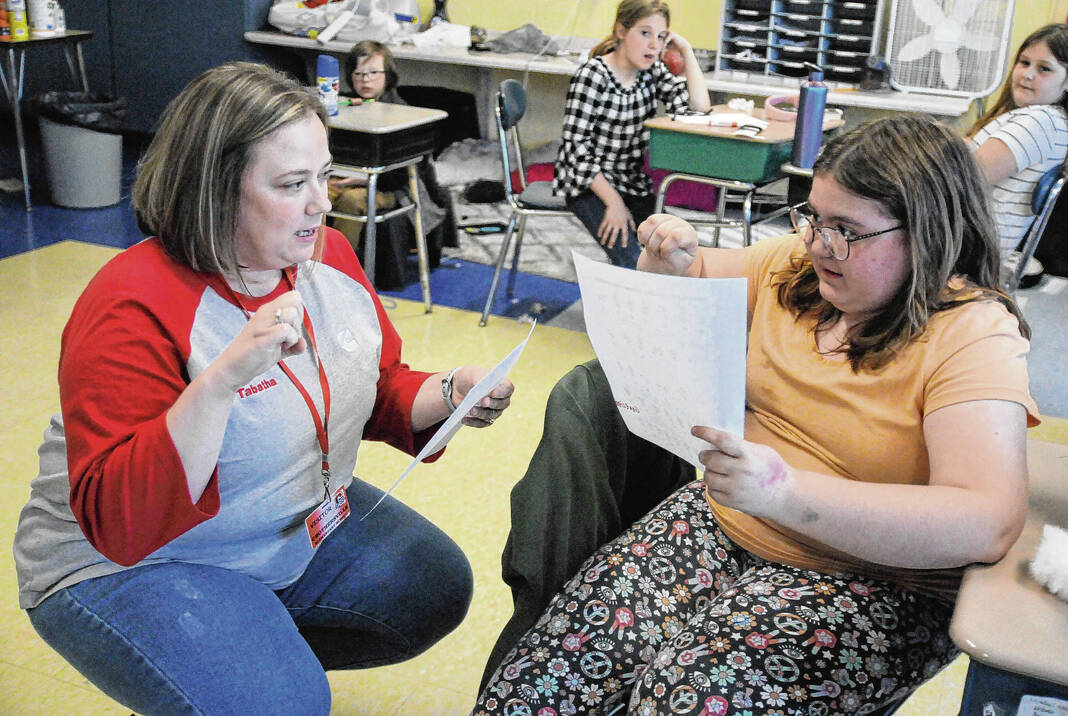CROTHERSVILLE — Since they started working together this school year at Crothersville Elementary School, Sara Salas and Amie Cottingham noticed some of their students needed a sensory outlet.
They approached Principal Whitney Reinhart about exploring options to create a place for the kids to go to calm down.
Salas, the school’s special education teacher, began reaching out to local businesses and large corporations in hopes of gaining financial support for a sensory room.
Locally based engine maker Cummins Inc. expressed interest in a partnership that would involve employees donating their time to teach Ability Learning to CES students in exchange for donating what’s needed for the sensory room. They had previously done this at a school in Brown County.
“They were like, ‘Yes, we would absolutely love to donate to this project. If we do donate, here’s what we would like to do in exchange for a donation,’ and we were like, ‘Absolutely,’” Salas said.
Ability Learning creates awareness and educates students about disabilities. Cummins workers come up with meaningful and educational events that teach traditional students about the challenges faced by individuals with special needs.
The first session with third-, fourth- and fifth-graders was April 26, the second one was May 3 and the final two are this Wednesday and May 17. Teachers are given short videos for the class to watch, and then once the Cummins employees arrive in the classroom, they teach a lesson based on the videos.
The lessons include autism, learning disabilities and hearing, mobility and vision impairments. Students are put through an exercise for each lesson to help them gain a better understanding of what it’s like to have special needs. It wraps up with a group discussion about the experience and how they can help assist others with disabilities in the future.
“I think it’s just being more aware of their peers and even just people that they interact with out in public and being empathetic and just good human beings,” Salas said.
Reinhart said the hope is to increase empathy for their peers with special needs, many of whom are in the classroom with them.
“They are learning about students that are sitting right there in their own classroom that maybe they haven’t even had the awareness like they are through this program,” she said.
“They get to actually step into their shoes and see how it feels through these interactive activities, and I think it’s a big eye-opener for them,” Salas added.
For the blind activity, kids have an opportunity to wear goggles and hold a walking stick and are told to walk from the front of the classroom to an object in the back of the room. Each time, they have a classmate walking along to help guide them, letting them know if a person or thing is in the way.
Kent Allen, who works in human resources for Cummins, told the students that blind people hold a walking stick at an angle, move it from side to side and tap it on the ground to know if something or someone is around them and if the ground surface or level changes.
“You need to know all of that because if they are not careful, they could still hit something … so they need to know everything that’s in front of them,” he said.
If someone sees a person with a walking stick, Allen said it’s good to help them as they are walking along or crossing a street.
“We could help them or tell them ‘Hey, it’s safe to cross now’ or ‘It’s not safe to cross now,’” he said.
There are two different deaf activities. One involves learning sign language, and the other involves wearing earplugs and earmuffs to gain an understanding of how hard it would be if you couldn’t hear well or at all.
After passing out sign language alphabet charts, Cummins employee Tabatha Tallent asked if any of the students knew sign language. One girl said she uses it in a church choir. One girl said she has a book of sign language. One boy said his great-grandfather is deaf and uses sign language. The teacher even said she has a coworker who has a hearing impairment.
Tallent and fellow Cummins employee Taylor Whittington then went through the sign language alphabet before working one-on-one with the kids to spell their own name from what they just learned.
When the students did the earplugs and earmuffs activity, Cummins employee Joel Lewis asked them what it would be like if they couldn’t hear their favorite music or birds or talk on the phone.
He also said the students only had to wear those things for a few minutes. People who have a hearing impairment deal with it all of the time. For the students, that includes some of their peers.
“I will guarantee you that there are some things that you don’t know about your fellow classmates, but the first step in understanding what your classmates are having to go through is being able to be in their shoes, doing what they do,” Lewis said.
“You guys just got to experience what it’s like to have a hearing disability for a few minutes. Some people can’t take the headphones off. Some people can’t take their earplugs out,” he said. “The understanding here is that you will be better understanding how they feel and how they adapt if you know what it’s like.”
Lewis also talked to the students about what they could do to help others who can’t hear. Learning sign language, writing words out, speaking clearer and enunciating words are among the options.
The last advice Lewis shared is to keep the volume lower while using headphones, AirPods and earbuds.
“Unless you do not want to be able to hear when you’re much older. Take care of your hearing, OK?” he told the kids. “I know everyone wants to have the music loud. I used to love to have music loud, but it’ll hurt you in the long run.”
The other activities include learning Braille, using a wheelchair and learning about autism, learning disabilities and physical disabilities.
As for the sensory room, Salas said that will be created this summer. They are looking for kinesthetic items, like fiber-optic lighting, ball pits, compression rollers and flexible seating.
“It’s really just a full sensory workup for whatever the student needs,” she said. “We’ll work very closely with our occupational therapist. They’ll have a sensory diet. It’s not just for anybody to go in and use. You actually have to have a need for it.”
Salas said she currently has 24 special education students in the elementary school, and those in the junior-senior high school will have access to the sensory room, too.
“I think it’s something that everybody has expressed a need for,” she said. “Not just the special ed department, but our entire staff and administration have noticed that it would be beneficial, and it kind of just took getting started to realize that it was something we could actually achieve.”
Thanks to Cummins and some other donors, from small businesses to large corporations, this is becoming a reality.
“We’re blown away by the immediate response of ‘Yes, we’ll help,’” Reinhart said.
“It was really exciting just to see that our kids are going to be able to have something that is a dire need for them at this school,” Salas said. “It was really just overwhelming to see how many people wanted to see that for our school also. I am so excited to have this resource in our building for our students. I look forward to all of us working together to bring awareness to our elementary school.”

